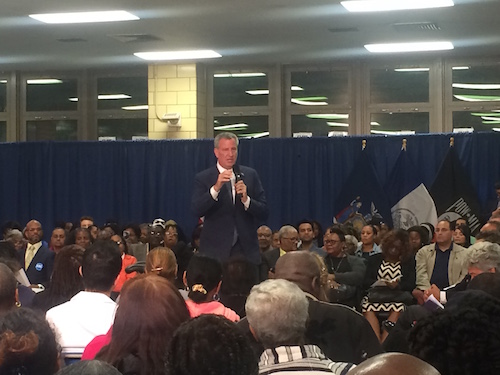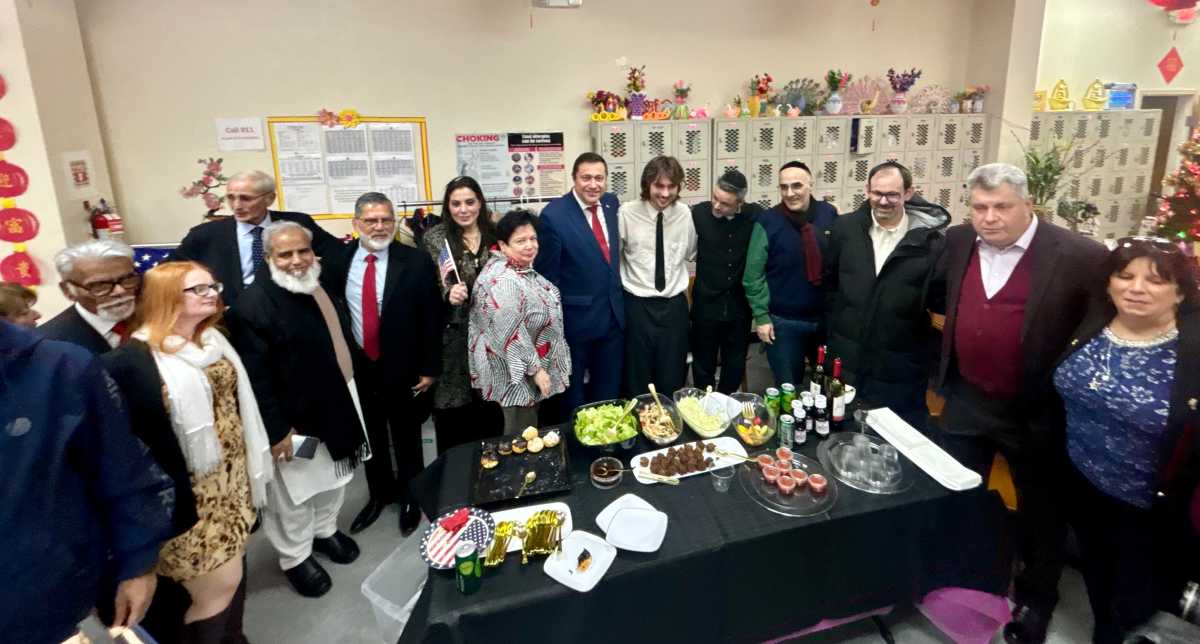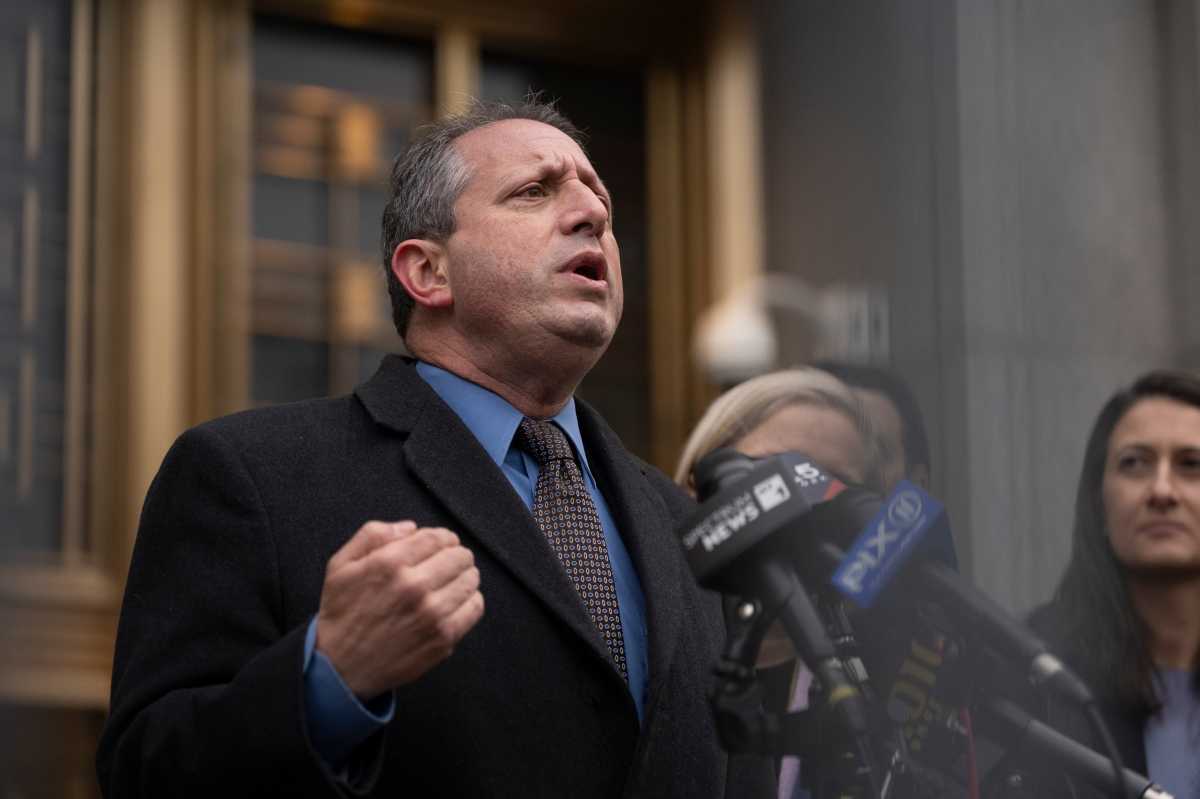He might not be in uniform anymore, but Brooklyn Borough President Eric Adams controlled the firing squad of questions at last night’s Town Hall like a seasoned cop.
Adams played host to Mayor Bill de Blasio’s Town Hall at Roberto Clemente School in East New York yesterday, where hundreds of concerned residents and community leaders raised questions surrounding the Mayor’s East New York Rezoning Plan.
The East New York Rezoning Plan, which was passed back in April of 2016, the first of a dozen neighborhoods that the city targeted for new land use rules in an effort to develop more affordable housing, economic development and improve community amenities.
The Plan was developed through a robust community planning process, through close collaboration with local residents, community leaders and elected officials over a years period. In addition, the plan is part of the Mayor’s New York Housing Plan to build and preserve 200,000 units of affordable housing over 10 years that was launched back in 2014. Since taking office the de Blasio administration has created 77,651 affordable homes.

The night’s first questioned posed by a long-term resident of Starrett City (Spring Creek Towers), set the tone for the evening as de Blasio fielded question after question regarding affordable housing and New York City Housing Authority (NYCHA) improvements.
“As far as the rezoning to provide affordable housing, why didn’t you duplicate the sustainable and most successful affordable housing program in the country, the Nehemia and Mitchell-Lama housing program?” said the Starrett City resident.
The mayor replied that though the past affordable housing programs were very successful, they no longer are available due to the increased costs of property and the homeless crisis facing the city.
“The need has gotten so great that we have focused intensely on rental versus home ownership, simply because of the costs involved and the need. We’re trying to get as much in the hands of people, as quickly as possible, given the severe need of the [housing] crisis. And because there are severe limits on what we have available, in terms of public money,” said de Blasio.
The city is facing a homelessness and housing crisis with over 60,000 homeless individuals across the city. Early last month, Starrett City housing complex, the largest federally-subsidized housing development in the nation, spanning 5,881 apartment units in 46 buildings, went up for sale for more than $850 million. A joint venture of the Brooksville Company, a recently formed residential real estate firm, and Rockpoint Group, a private equity firm that invests in real estate has offered to buy the development. Currently, the Trump family also has a small stake in the development.
However, Starrett City is currently under an agreement with the U.S. Department of Housing and Urban Development (HUD) and New York State Homes and Community Renewal that require apartments to remain affordable and under current rent restrictions until 2039. Both HUD and the State will have to approve the sale.
Another attendee at the Town Hall, a private landlord, made sure to note the lack of support from the city toward private housing in favor of NYCHA improvements, that has left many private landlords failing to keep long-term residents in their units.
“I have been a resident of this community for over 47 years and I’ve seen the community go from bad to worse and then come back up again. I am a landlord and I have six tenants. I spoke with other landlords who want to participate in the section 8 program but can’t because of regulations. These regulations are way too much, but then you allow NYCHA to get away with everything. Instead of letting us be a part of affordable housing, a lot of people are backing out and walking away because the regulations are just too much,” said the man, who identified himself as James.
NYCHA is currently in the process of improving many of it’s housing complexes that were lacking maintenance and repairs for many years. At the beginning of 2017, the Mayor pledged to increase funding to the failing city agency that left many with leaking and moldy roofs as well as a lack of working heat and water systems in some units.
Near the end of the three-hour-long meeting, a local resident, who identified herself as Bernice, took the time to highlight the lack of access to affordable housing in the community due to the controversial Area Median Income bands set by the Department of Housing and Urban Development (HUD).
“Okay I am a train operator and this affordable housing that we have, I make too much, so I’m not eligible for that. And the [market-rate] housing that you’re putting out I make too little, so I’m not eligible for that. I am single, have no kids but I can’t find a place to live,” said Bernice*.
According to city’s office of Housing Preservation & Development (HPD), the median income for the city is defined by HUD and the 2017 AMI for the NYC region is defined as $85,900 for a three-person family (100% AMI).
However, according to census data from 2014, the average median income for Brooklyn was a mere $44,850. In addition, the AMI is a calculation that includes Putnam and Westchester counties as well as parts of New Jersey and Connecticut, according to reports.
In the end, the Mayor promised to keep his commitment towards providing the most open and honest affordable housing initiative that also includes low-income and subsidized housing.
“We believe in public housing. It will always be public. It will never be privatized. We believe in public housing and what it does for people,” said de Blasio.










